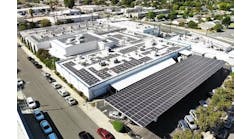A new federal electrification study finds potential cost savings of $800 billion through 2050 by electrifying the US economy, depending on several variables including the extent of electrification.
The report is the fifth installment in the National Renewable Energy Lab’s (NREL) multiyear Electrification Futures Study (EFS) series, which analyzes the potential impact of widespread electrification on the US electricity system. The study focuses on power generation, transmission infrastructure investments, fuel use, system costs and emissions.
Reaching $800 billion in savings requires high levels of electrification with rapid advancements in the cost and performance of end-use electric technologies, the report said.
Electrification will also cost money — $28 trillion under a base case — because it requires capital investments that include demandside equipment. However, the costs are “partially or entirely offset” by fuel and operational savings in buildings, transportation and industry, said the report.
At the same time, the analysis found that electrification only modestly affects the cost of retail and bulk electricity across all scenarios considered.
In addition to projecting costs and savings, the report also found that:
- Electrification will drive deployment of renewable energy and natural gas generators in all regions of the US.
- The US will increasingly rely on local energy resources to meet demand.
- Flexible loads will become more important, particularly flexible EV charging, as a way to modify electricity peaks.
- Electrification will have only a modest effect on the cost per unit of electricity consumed ($40–$46 per megawatt hour) and bulk electricity prices.
The report considered a range of scenarios — from high to low penetration of electrification. Under high-electrification scenarios, the US will need to double its power capacity over 2018 levels by 2050. Researchers also envision energy storage capacity more than doubling during the timeframe.
Renewable energy will help meet the demand, as will natural gas (in the absence of possible government policies that slow its use), but which sources dominate will depend on their prices.
Credit: NREL
Electrification increases the cost-effectiveness of local generation so no massive transmission buildout will be required to connect distant power plants to consumers. The report forecasts a need to add only 11%-14% more long-distance transmission lines.
The report also found that electrification will reduce emissions from energy (carbon dioxide, nitrogen oxide and sulfur dioxide); however, the extent of the reduction depends on how much electricity is produced from clean energy resources.
According to the report, more opportunities open up to employ flexible load as buildings, transportation and industry increase their reliance on electricity as a fuel source. Flexible load decreases the need to build additional power infrastructure by reducing system peaks through careful timing of electric vehicle charging and use of space heating.
NREL used its flagship capacity expansion and dispatch tool for the contiguous US — the Regional Energy Deployment System (ReEDS) model — to assess how electrification would affect the bulk power system.







